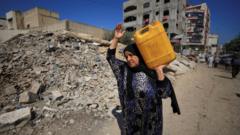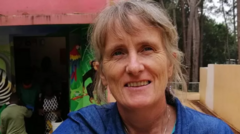Thousands of villagers in Madhya Pradesh are protesting the Ken-Betwa river-linking project, fearing displacement and environmental destruction. Critics highlight the potential ecological risks and insufficient compensation for affected communities, whilst officials defend the project’s benefits.
Major River-Linking Initiative in India Faces Backlash from Local Communities

Major River-Linking Initiative in India Faces Backlash from Local Communities
The Ken-Betwa river-linking project, designed to alleviate drought in Bundelkhand, faces widespread protests from villagers fearing loss of homes and livelihoods.
In the central Indian state of Madhya Pradesh, the Ken-Betwa river-linking project, with a hefty budget of 440 billion rupees (approximately $5.06 billion), has become a flashpoint for massive protests. Local villagers, particularly from indigenous communities like the Gond and Kol tribes, are voicing their concerns about the significant impact this project will have on their homes and livelihoods. The initiative aims to channel excess water from the Ken River to the Betwa River through a series of tunnels, canals, and a dam, as part of a broader scheme under India’s National Perspective Plan.
Initiated in the 1980s but delayed due to environmental and political hurdles, the project received government approval in 2021, with Prime Minister Narendra Modi laying its foundation stone in December 2022. The government's rationale claims that the project would alleviate drought conditions in the Bundelkhand region, set to irrigate over one million hectares, provide drinking water for 6.2 million people, and generate substantial renewable energy.
However, the local populace raises serious alarms over the plan, which threatens to submerge at least 10 villages and displace more than 7,000 families. Environmental experts warn that it will also inundate approximately 98 square kilometers of the Panna Tiger Reserve, risking decades of wildlife conservation efforts. "This represents an unprecedented scaling of infrastructure within a core area of a national park," noted environmentalist Amit Bhatnagar.
Concerns have been echoed by independent studies questioning the project's long-term viability and impact on regional ecosystems. Despite the government's assurances of thorough research and environmental clearances, anxiety remains high among the villagers. For many, the proposed compensation amounts, compared to their current living conditions, seem insufficient and highlight a disregard for their voices.
As protestors gather, sharing songs steeped in their struggle, they articulate the irony of fostering development that appears to enrich other areas at their expense. With the future of their homes hanging precariously in the balance, local leaders like Mahesh Adivasi express frustration over the sacrifices being demanded of them for others' benefits.
Calls for transparency grow louder as discrepancies in data regarding river water yields surface, leading critics to suspect that the government may be operating on outdated information. While officials back the integrity of their data, downtrodden villagers continue to fear that their plight reveals a broader issue: the marginalization of those most affected by development policies in India. As protests persist, the fate of both the community and the environment remains uncertain.




















